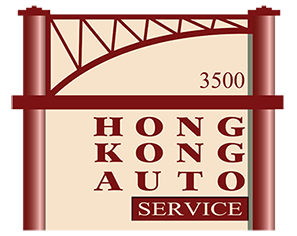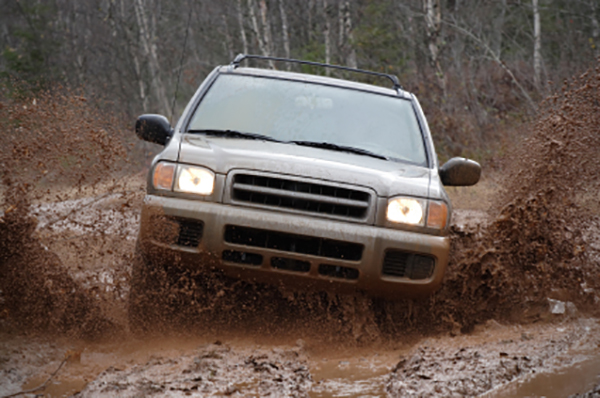What You Need to Know to Maintain Your 4×4 Vehicle
Enjoying a four-wheel drive vehicle (4×4) can be a beautiful thing. Whether your vehicle is all-time all-wheel drive or allows you to select between two- and four-wheel drive as driving conditions dictate, the freedom that a 4×4 offers is, for some, one of life’s greatest pleasures.
Camping, hunting, fishing, rock crawling, archaeology, or just general off-roading are near impossible tasks made attainable by four-wheel drive. Think about it – where a two-wheel drive vehicle becomes useless, a four-wheel drive is only getting started.
Having said all that, there are some pitfalls to owning a four-wheel drive vehicle. Some of these shortcomings can be attributed to lack of maintenance, while others are considered to be the costs associated with the freedom to go “four-paw crawl” when the need arises.
Potential Problems Multiplied by Two
The first thing to think about is that your four-wheel drive vehicle has twice as many components as a two-wheel drive. That means twice as many axle shafts, axle bearings, universal joints, constant velocity (CV) joints, and drive shafts. Regular maintenance can help with component longevity, but there are going to be wear-and-tear items that go bad no matter what.
With twice as many axle bearings, four-wheel drive vehicles are particularly susceptible to deterioration from dirt and debris. Although four-wheel drive vehicles offer access to muddy and even flooded areas, the dirt and grit that remains under your vehicle can seriously shorten the life-span of bearings and seals if left unattended. A pressure washer, some goggles, and a pair of coveralls are among your most valuable tools if you own a four-wheel drive vehicle and love to get it muddy.
Split or cut boots on CV joints can lead to bigger problems and should be rectified as early as possible. Also, make sure that you (or your auto technician) aren’t stingy with the grease gun: Lube those universal joints (on the drive shafts) at every oil change.
Ties That Bind a 4×4
When you shift your four-wheel drive into low gear, the front axles will bind up upon making deep turns. Don’t be alarmed. It only feels like the front end is rolling under the engine – of course it’s not really. There is nothing that may be done to rectify this binding. Try not to turn the steering wheel to a complete stop and enjoy the freedom to go just about anywhere.
Transference
Another thing that a four-wheel vehicle is equipped with, that a two-wheel drive is not, is a transfer case. Depending upon drivetrain configuration, the transfer case may allow the front and rear axles to pull in synchronization with one another or independently of one another.
Checking and replacing the transfer case fluid should be added to your regularly scheduled maintenance. Conscientious automotive mechanics like our team at Hong Kong Auto Service check the fluid in your transfer case with every oil change and they offer expert transfer case fluid replacement when it is required.
The front and rear driveshafts are driven by the transfer case so there are a lot of moving parts in this area. Selector systems for the transfer case can also be pretty diverse and complex, ranging from electronic to vacuum operated to mechanical linkage.
Beyond that, selector systems which activate the locking of the secondary hubs (if applicable) can also vary with manufacturer and vehicle type. Some hubs are automatically locked, while others may be locked electronically with the press of a button. Still, others require that someone exit the vehicle and manually lock the hubs.
Heavy Load
Of course, the typical four-wheel drive vehicle outweighs its two-wheel drive counterpart by a sizable margin, depending upon make and model. This, in itself, presents some unique problems. The increased weight can make engine performance seem sluggish, decrease braking component longevity, and over time take a negative toll on suspension and steering parts.
More Rubber – More Problems
As a general rule, four-wheel drive vehicles are equipped with larger and more aggressive tires than two-wheel drive vehicles. This means that the tires will cost more to replace. It will also mean that you want to be even more careful about maintaining wheel alignment, tire rotation, and proper tire inflation. Pay careful attention to changes in the feel of your vehicle. If the steering wheel is suddenly in a different clock position, when travelling straight down your lane, suspect that you have an alignment issue or an under inflated tire. An unexpected vibration – felt only at a certain speed – may be an indication of a tire that is out of balance or worn unevenly.
Preventive car care will help you extend the life of your 4×4 so you can enjoy all of its benefits. We at Hong Kong Auto Service are happy to be your partner in making sure that your car is safe and well maintained for many years to come. Call us at 847-251-0300 or contact us with questions or to schedule an appointment.

